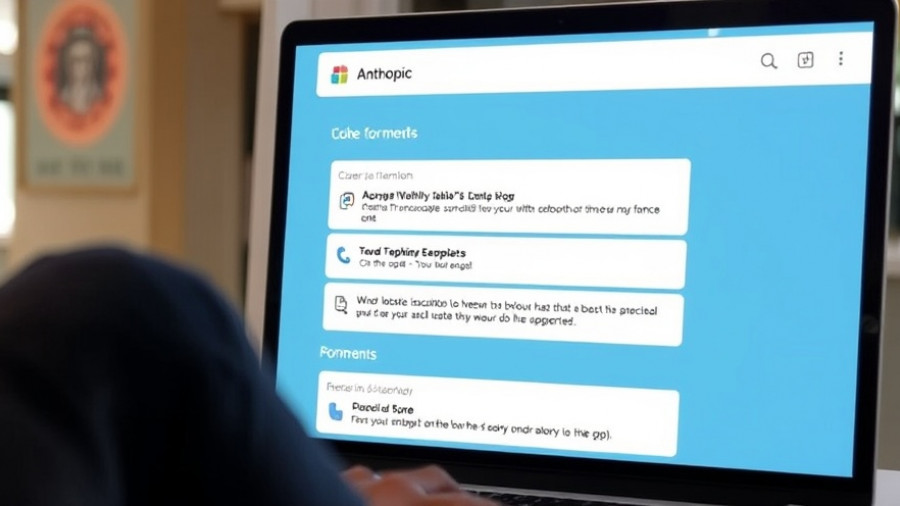
The Critical Choice for Developers: AI Model Impact on Real-World Applications
In an era where artificial intelligence shapes the future of app development, choosing the right AI model can be a daunting responsibility for developers. With several options available, including ChatGPT-5, Claude, and Qwen, understanding their nuances is crucial. A single choice could influence not just the reliability of an application but the overall success of a project.
Understanding the Models: Strengths and Limitations
In this ever-evolving tech landscape, each AI contender brings unique capabilities to the table. Claude (Opus 4.1 and Sonnet 4) stands out as particularly reliable, being the top choice for developing applications requiring advanced functionality and minimal errors. Its performance in the project “Newsletter Digest” demonstrated its capability in executing complex tasks that are essential for modern applications.
Meanwhile, GPT-5 showcased a diverse range of abilities but often required additional corrective input from developers to achieve desired outcomes. While this versatility makes it an interesting option, it raises concerns about efficiency and productivity for teams who need seamless deployments.
Qwen Coder, known for its speed and affordability, presents an alternative for budget-conscious developers. However, its inconsistency and lack of completeness in functional applications make it less desirable for intricate projects. Developers must weigh the trade-offs of cost against reliability.
Cost Analysis: Hidden Implications of Model Selection
A cost breakdown of the three models reveals interesting insights. Claude, being the most expensive, justifies its cost through superior performance and minimal error rates. On the other hand, developers using GPT-5 can expect mid-range costs but at the expense of potentially increased troubleshooting time and project delays. Lastly, while Qwen offers an affordable option, its unreliability may lead to hidden costs in terms of rework and technical debt.
Real-World Application: The Making of "Newsletter Digest"
During the development of "Newsletter Digest," which aggregates and summarizes newsletters from Gmail, the importance of these AI models became dramatically clear. This application emphasizes the need for accuracy and efficiency—traits that Claude sharply provides.
Built with tools like Next.js for dynamic front-end development and Neon for robust user data management, the development process required an AI model that could keep pace with the technical demands. Claude's ability to deliver reliable outputs ensured that the app functioned smoothly, demonstrating the necessity of partnering with the right AI model.
Future Predictions: Trends to Watch in AI Development
Looking ahead, as AI technology continues to advance, the importance of selecting the right AI model may grow exponentially. With emerging demands for complex functionalities and heightened user expectations, the pace at which these models improve will define their market value.
Investment in AI will likely increase as businesses seek to harness these tools for improved operational efficiency. Companies might gravitate towards models that provide a perfect blend of reliability and cost efficiency, marking Claude as a potential benchmark against which others will be measured.
Final Thoughts: Understanding the AI Model Landscape
The decision regarding which AI model to utilize is more than just a technical choice; it can dictate the overall trajectory of projects. With founders and CTOs weighing the costs and benefits of ChatGPT-5, Claude, and Qwen, the landscape of app development will continue to evolve, with each project offering new insights.
By navigating these selections judiciously, developers can ensure that their projects not only meet today’s needs but also anticipate future demands. As the AI field continues to grow, an informed choice will give developers the best chance at success.
Climate of Change: The Road Ahead in Artificial Intelligence
Amidst technological innovation, the AI landscape is shifting towards more adaptive and human-centric models. As AI integration becomes critical across industries, the pressure will also rise on leading developers to maximize the efficiency of their chosen models. This underlines the importance of continual learning, adaptation, and responsiveness in AI development.
 Add Row
Add Row  Add
Add 




Write A Comment